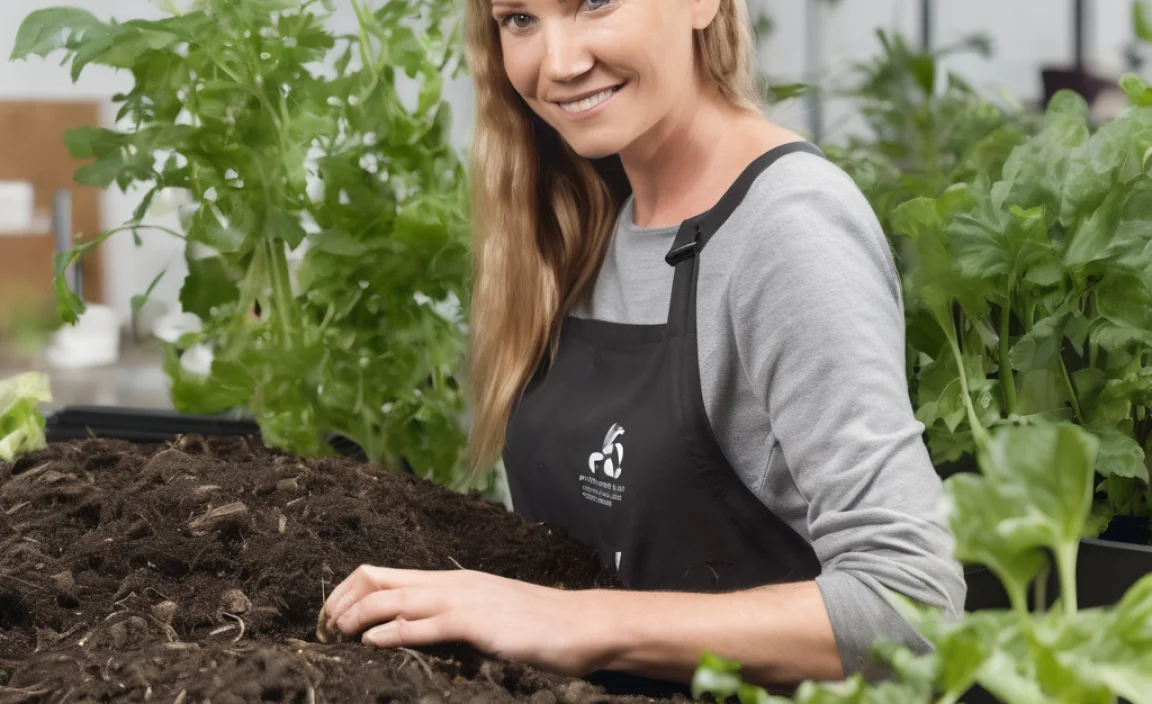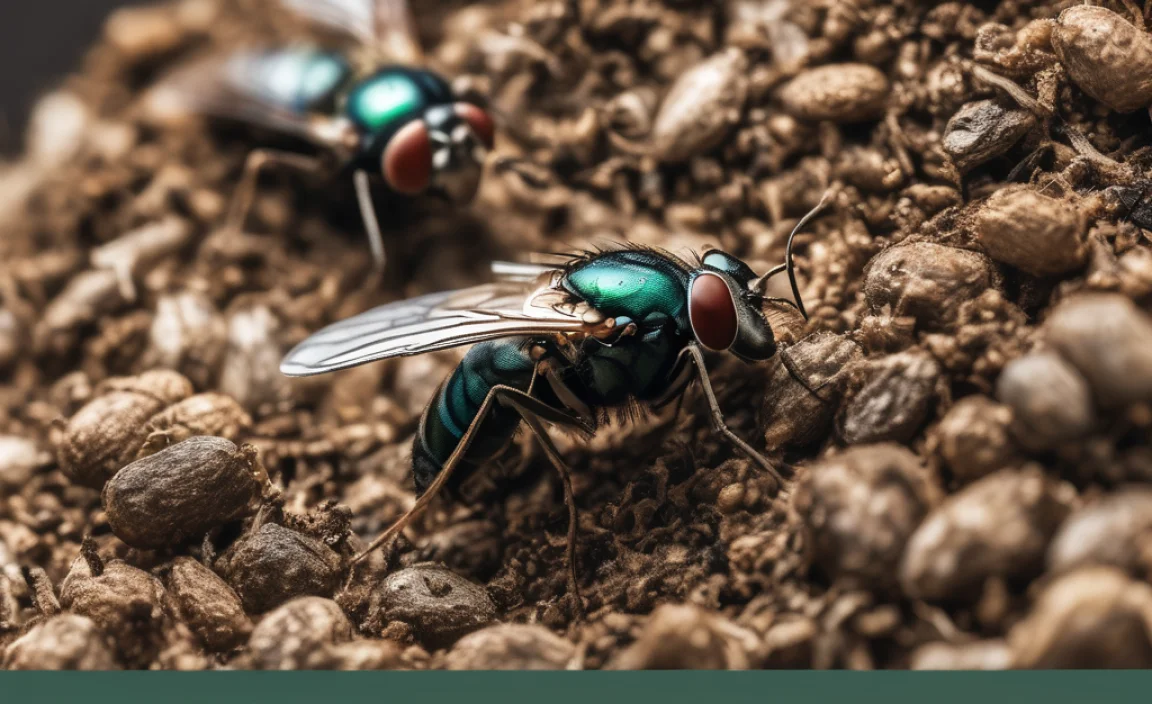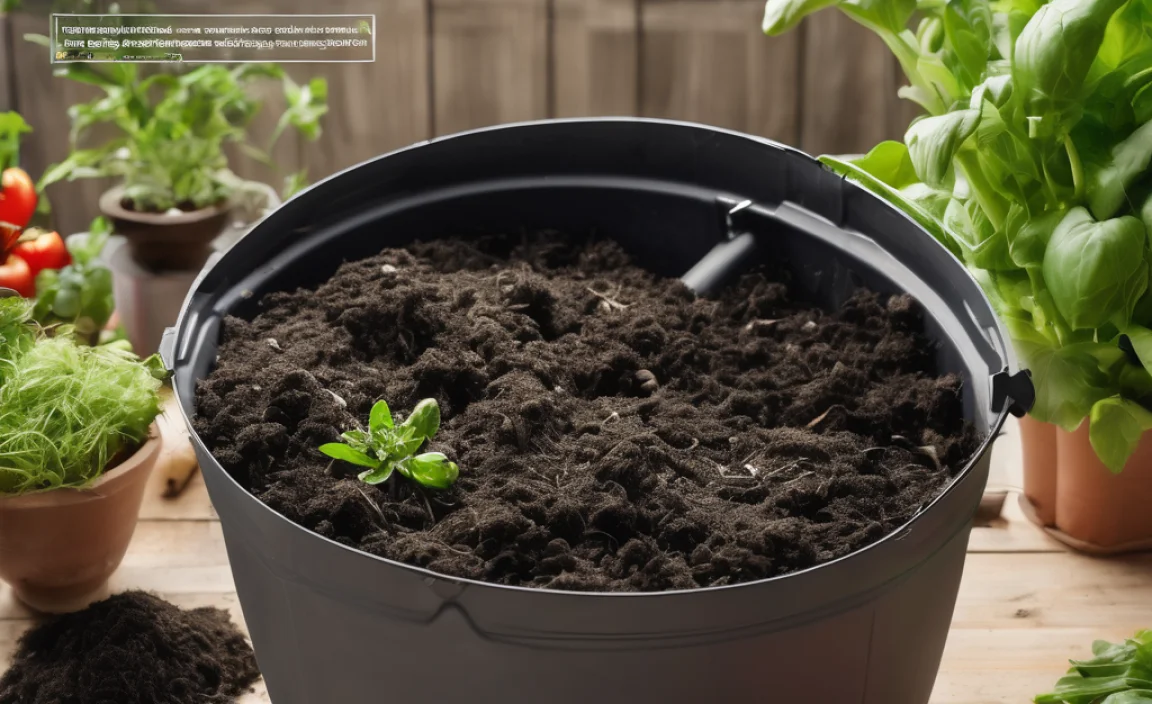Have you ever heard of lasagna composting? No, it’s not about baking food! It’s a fun and easy way to turn kitchen scraps into rich soil for your garden. This process helps the earth by recycling waste naturally. You might wonder why it’s called “lasagna.” Imagine layers of food scraps and leaves piled like a delicious lasagna! Let’s explore lasagna composting step by step and learn how you can help the planet.
Key Takeaways
- Lasagna composting is an easy way to create rich soil.
- Layering is key in lasagna composting step by step.
- Use kitchen scraps and yard waste to compost.
- Helps reduce garbage and enriches garden soil.
- Anyone can start lasagna composting at home.
Lasagna Composting Step by Step: Getting Started
Lasagna composting is a method that requires simple materials and steps. You start by picking a spot in your yard or garden. It should be a sunny place with good drainage. You don’t need a big area, just enough space to lay down layers. First, gather your materials like newspaper, cardboard, kitchen scraps, and leaves.
- Select a sunny spot in your yard.
- Gather kitchen scraps and yard waste.
- Collect newspapers and cardboard.
- Find some green materials like grass clippings.
- Keep a bucket for collecting daily scraps.
- Plan the size of your compost pile.
- Decide on a container or open-air space.
Once you have your materials, you can begin layering. This means creating alternating layers of “green” materials and “brown” materials. Greens include kitchen scraps and grass clippings. Browns include dry leaves and newspaper. These layers will eventually decompose into rich soil. Keep reading to find out how to make the perfect layers!
Fun Fact or Stats : Composting can reduce landfill waste by up to 30%!
Choosing the Right Spot
Where should you start your compost pile? It’s important to choose a good spot. You need an area that gets sunlight and has good drainage. Why? Sunlight helps break down the layers faster. Drainage ensures the compost doesn’t get too soggy. A soggy compost pile can smell bad and attract pests. Find a place that’s easy to reach but not in the way. It should be close to the kitchen for easy scrap disposal! Isn’t it fun to have nature help you recycle?
Collecting Materials
What should you use in your compost pile? Gather things like fruit peels, coffee grounds, and veggie scraps. These are your green materials. You also need brown materials like dried leaves and cardboard. The balance between greens and browns is crucial. Too many greens can make the pile wet. Too many browns can slow decomposition. Keep your materials in separate buckets for easy layering. Isn’t it neat how you can use things you’d usually throw away?
Planning the Compost Pile Size
How big should your compost pile be? It depends on how much space you have. A small yard may need a smaller pile. Think about the amount of scraps you produce. A pile about three feet wide and tall should be good. This size allows for good airflow, which helps decomposition. Larger piles can be harder to manage. Remember, you can always expand later! Doesn’t it feel great to turn waste into something useful?
Lasagna Composting Step by Step: Building Layers
The secret to lasagna composting is in the layers. Start with a layer of cardboard or newspaper. This acts as the base. Then, add a layer of green materials like kitchen scraps. Follow this with a layer of brown materials such as leaves. Keep repeating this pattern until your pile is as big as you want. Remember, the more layers, the better the compost!
- Start with a base layer of cardboard.
- Add a layer of green materials.
- Cover greens with a brown layer.
- Alternate between greens and browns.
- Ensure layers are evenly spread.
- Build layers as high as desired.
- Finish with a brown layer on top.
Each layer should be about two to four inches thick. This thickness helps with decomposition. You want your pile to be moist like a wrung-out sponge. Not too wet, not too dry! This balance is important for the microbes that break down the materials. Keep an eye on your pile and adjust as needed. Next, let’s learn about maintaining your compost pile!
Fun Fact or Stats : A well-maintained compost pile can reach temperatures of 140°F!
Starting with a Strong Base
Why is the base important? The base layer helps with drainage and aeration. Use cardboard or newspaper for this purpose. This layer allows air to circulate and water to drain. Air is important for composting because it feeds the tiny decomposers. Without it, the pile might turn smelly. Make sure the base is flat and even. This sets the stage for the rest of your layers. Isn’t it interesting how a simple piece of cardboard plays a big role?
Balancing Greens and Browns
What makes the perfect compost? It’s the balance between greens and browns. Greens are rich in nitrogen and help heat up the pile. Browns are high in carbon and keep the pile airy. You need both for successful composting. Without this balance, your pile won’t decompose well. Aim for two parts brown to one part green. This ratio helps keep the pile healthy and active. Isn’t it amazing how different materials work together?
Moisture Management
How do you keep your compost just right? Moisture is key to a healthy compost pile. You want it to feel like a damp sponge. Too much water can drown the microbes. Too little water can slow them down. Check the pile’s moisture by squeezing a handful. If water drips out, it’s too wet. If it crumbles, it’s too dry. Adjust by adding dry leaves or spraying water. Isn’t it fun to play scientist with your compost?
Maintaining Your Lasagna Compost
Maintaining your compost pile is like taking care of a garden. You need to watch over it and make adjustments. Regularly check the pile to make sure it stays balanced. Turn the pile every few weeks to add air. This helps speed up decomposition. Keep an eye on the moisture level, too. A good compost pile is like a living thing that needs care.
- Turn the pile every two weeks.
- Check moisture levels regularly.
- Add new layers as needed.
- Watch for pests and remove them.
- Ensure the pile stays warm.
- Cover the pile in heavy rain.
- Use a thermometer to check heat.
Regular turning introduces oxygen, which is vital for decomposition. Use a pitchfork or shovel to mix the layers. If the pile feels cold, it may need more greens. If it smells, add browns or turn it more. With time and care, your pile will turn into rich soil. Next, let’s see what happens when the compost is ready!
Fun Fact or Stats : Composting can heat up to 170°F in the center!
Turning the Pile
Why turn the compost pile? Turning the pile adds oxygen, which helps things break down. Without oxygen, the pile might smell. Mix the layers every two weeks or so. Use a spade or fork to do this. Turning also speeds up the process. It mixes the materials and restarts the composting activity. So, don’t forget to turn your compost pile. Isn’t it fun to get your hands a little dirty?
Checking for Pests
Are there unwanted visitors in your compost? Sometimes pests like rodents or bugs may appear. Keep them away by covering food scraps with brown layers. If animals dig in, you might need a lid or a fine mesh cover. Avoid adding meat or fatty scraps, which attract pests. Regular maintenance helps keep pests at bay. It’s like being a detective in your own backyard!
Monitoring Heat and Moisture
Why monitor heat and moisture? They tell you how well your compost is doing. A warm pile means happy microbes! Use a compost thermometer to measure the temperature. A healthy pile should be warm, but not burning hot. Check moisture by squeezing a handful. Remember, you want it like a damp sponge. Adjust the pile based on these checks. Isn’t it cool to watch science in action?
Knowing When Compost is Ready
How do you know your compost is ready? Finished compost looks like rich, dark soil. It should smell earthy, not rotten. The materials should be broken down with no large pieces visible. This process can take a few months depending on the conditions. Be patient! The end product is worth the wait.
- Check the color and smell.
- Look for a soil-like texture.
- Ensure everything is broken down.
- Test by planting a small seed.
- Use a sieve to remove large bits.
- Check readiness every few weeks.
- Store in a dry, covered place.
Once ready, use your compost in the garden. It enriches the soil with nutrients. Plants grow stronger and healthier with compost. Use it in flower beds, vegetable gardens, or even potted plants. You’ve turned waste into something valuable. Isn’t it amazing to see the cycle of nature come full circle?
Fun Fact or Stats : Compost can improve soil structure and water retention!
Signs of Finished Compost
What does finished compost look like? It resembles dark, crumbly soil. It should have a fresh, earthy smell. You won’t see any food scraps or leaves. Everything should be broken down. If you spot any large pieces, sift them out. Finished compost is like a treasure for your garden. Isn’t it rewarding to see your hard work pay off?
Testing the Compost
Is your compost truly ready? Here’s a simple test. Plant a small seed in the compost. If it sprouts and grows well, your compost is ready. If not, give it more time to mature. This test shows the compost’s nutrient level. It’s amazing how a little seed can tell you so much! Isn’t it cool to see life spring from your compost?
Using the Compost
How do you use your compost? Mix it into your garden soil. It adds nutrients your plants need. Spread a layer around plants to keep moisture in. Use it when planting new seeds or plants. Compost is like a vitamin boost for your garden. You’ll see a big difference in plant growth and health. Isn’t it exciting to turn scraps into plant food?
Lasagna Composting and Its Benefits
Lasagna composting offers many benefits for you and the environment. It’s an easy way to reduce waste. You recycle kitchen scraps and yard waste into valuable soil. This process also enriches your garden, promoting better plant growth. Plus, it’s a fun activity for the whole family!
- Reduces household waste significantly.
- Creates nutrient-rich soil for gardens.
- Supports healthy plant growth.
- Great educational activity for kids.
- Reduces reliance on chemical fertilizers.
- Encourages eco-friendly lifestyle.
- Easy and cost-effective method.
With lasagna composting, you not only help your garden, but the planet too. Less waste means fewer landfills. Healthier plants mean better air quality. You save money by not buying fertilizers. And it’s rewarding to see your efforts bloom. Doesn’t it feel good to make a difference?
Fun Fact or Stats : Compost can improve soil nutrient content by up to 30%!
Reducing Waste
How does composting reduce waste? By using food scraps and yard waste in your compost, you’re recycling. These materials would otherwise go to landfills. Reducing waste helps the environment by lowering greenhouse gases. It’s like giving the earth a big hug! With lasagna composting, you’re turning waste into a valuable resource. Isn’t it great to be part of the solution?
Enriching Garden Soil
Why is compost good for soil? Compost adds organic matter, which improves soil structure. It helps the soil retain water. This means less watering and healthier plants. Compost also provides essential nutrients for plant growth. Your garden will thrive with rich, dark compost. It’s like feeding your plants a yummy meal! Isn’t it amazing how compost can transform your garden?
Educational Family Activity
Why involve your family in composting? It’s a fun and educational activity. Kids learn about recycling and the environment. They see how waste turns into soil. It’s hands-on science in your backyard! Plus, it teaches responsibility and care for nature. Composting together can become a cherished family tradition. Isn’t it wonderful to learn and help the planet together?
Table: Benefits of Lasagna Composting
| Benefit | Description |
|---|---|
| Waste Reduction | Composting reduces landfill waste by recycling scraps. |
| Soil Enrichment | Improves soil structure and provides nutrients. |
| Environmental Impact | Reduces greenhouse gases and promotes sustainability. |
| Cost-Effective | Saves money on fertilizers and waste disposal. |
Conclusion
Lasagna composting step by step turns everyday waste into garden treasure. You layer materials, maintain the pile, and wait for nature to work. The results are rewarding for your garden and the planet. Start your lasagna composting journey today and enjoy the benefits!
FAQs
Question: What is lasagna composting?
Answer: Lasagna composting is a method of layering kitchen scraps and yard waste. You create alternating layers of green and brown materials. Over time, these layers break down into rich compost. It’s a simple and effective way to recycle waste.
Question: How do I start lasagna composting?
Answer: To start lasagna composting step by step, choose a sunny spot. Gather materials like kitchen scraps, cardboard, and leaves. Begin layering with cardboard, then green, then brown layers. Repeat until the desired height is reached. Maintain the pile for successful composting.
Question: What materials can I use in lasagna composting?
Answer: Use kitchen scraps like fruit peels and veggie scraps as green materials. For brown materials, use dried leaves, cardboard, and newspaper. Avoid adding meat, dairy, or fats as they attract pests and slow decomposition.
Question: How often should I turn my compost pile?
Answer: Turn your compost pile every two weeks. This helps add oxygen, which speeds up decomposition. Regular turning ensures the pile remains healthy and active. Use a pitchfork or shovel to mix the layers thoroughly.
Question: How do I know when my compost is ready?
Answer: Finished compost looks like dark, rich soil. It should have an earthy smell and no visible food scraps. Check the texture and color to ensure it’s broken down. Use a small seed test to confirm readiness.
Question: Are there benefits to lasagna composting?
Answer: Yes, lasagna composting reduces waste and enriches soil. It creates nutrient-rich compost for healthier plants. It’s cost-effective and eco-friendly. Plus, it’s a fun activity that supports sustainability!



